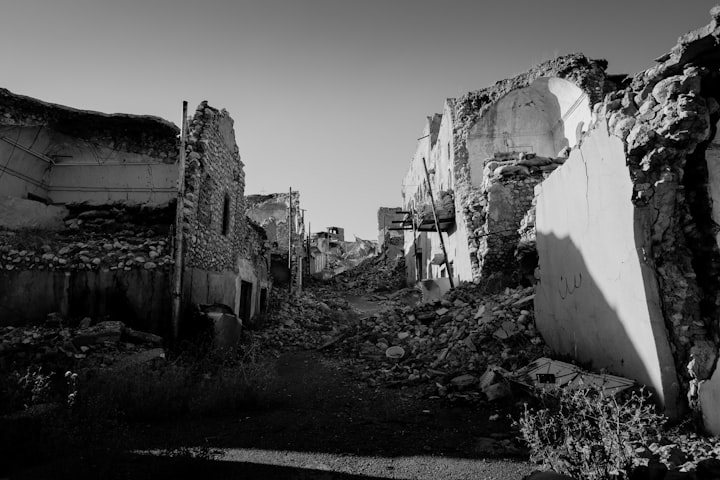Tears in the Sand
The Heartbreaking Saga of the Israel-Palestine conflict 🇵🇸x🇮🇱

Title: Tears in the Sand: The Heartbreaking Saga of the Israel-Palestine Conflict
In a land where history was etched deep into the golden sands and whispers of ancient tales echoed through the air, two peoples, the Jews and the Arabs, once shared a common dream. This was a time when laughter transcended language and shared history painted a mural of unity. However, beneath the surface of this serene landscape, a tempest brewed—a storm born of age-old grievances, fervent faith, and the political chaos of the 20th century, propelling the Israel-Palestine conflict into existence.
The story begins in the late 19th century, a time when the world was waking up to new possibilities. Fueled by an unyielding belief, Jewish immigrants embarked on a journey to return to the land of their forefathers. The Zionist movement, with its promise of a homeland, inspired the masses. Yet, it cast a shadow of uncertainty over the Arab residents, who had tilled the soil for generations. The horizon was now painted with trepidation.
As the years passed, this once shared land transformed into a battleground. The First World War altered the course of history, and the British Empire, victorious in its wake, took the reins of Palestine. In 1917, the Balfour Declaration was issued, an unequivocal declaration of support for a "national home for the Jewish people" in this ancient land. For the Arab population, it was a bitter betrayal, a promise broken that foretold of dashed dreams.
The League of Nations handed Palestine to Britain, and with it, a growing influx of Jewish immigrants. Tensions soared, and in the stillness of the arid nights, the melodies of Arab riots and Jewish protests rang out. The stage was set, and destiny was about to unfurl.
Then, in 1947, the United Nations proposed a solution: a partition plan to divide Palestine into separate Jewish and Arab states, with Jerusalem under international administration. Jewish leaders embraced the proposal, but Arab leaders vehemently refused. It was a moment of heartbreak, an opportunity lost. In 1948, the British withdrew, and Israel was born.
The proclamation of Israel marked the darkest hour for peace in the region. Arab nations retaliated with force, giving birth to the 1948 Arab-Israeli War. The repercussions were grave. Hundreds of thousands of Palestinian Arabs became refugees, their lives irrevocably changed. The seeds of bitterness, sown deep, grew into gnarled trees of despair.
The issue of Palestinian refugees became an enduring wound, as generations grew up in the confines of refugee camps. Meanwhile, Israel continued to expand, erecting settlements in the West Bank and Gaza Strip, feeding the flames of Palestinian resentment.
In 1967, the Six-Day War erupted, and Israel, in a pre-emptive strike, captured the Sinai Peninsula, the Golan Heights, the West Bank, and East Jerusalem. The status of East Jerusalem became a symbol of discord, its very existence a thorn in the hearts of millions.
In the following years, violence and conflict escalated, and both sides bore the pain of their choices. Palestinians launched uprisings, their intifadas, against Israeli rule, while Israel implemented security measures to combat acts of terror. Families, torn apart by hatred, found solace only in their shared suffering.
One of the most formidable obstacles to peace was the contentious issue of borders, especially the fate of the West Bank and Gaza Strip. The Oslo Accords brought a glimmer of hope, granting the Palestinian Authority limited self-governance, yet leaving many essential questions unanswered.
Religion, too, played its role in this tragic tale. The spiritual bonds of both Jews and Muslims to the land fueled the conflict. The city of Jerusalem, sacred to both, became the epicenter of discord, the jewel at the center of the storm.
The Israel-Palestine conflict, a symphony of sorrow and heartache, remains a testament to the human cost of unresolved disputes. The international community has tried and failed to bring lasting peace to this land, and the tears of countless mothers, fathers, sons, and daughters continue to water the arid soil of this enduring tragedy.
In conclusion, the Israel-Palestine conflict is a narrative of sorrow and lost dreams, a tale of broken promises and shattered lives. It began with hope and has been marked by heartache and despair. A resolution is elusive, but it is a dream worth pursuing, for it is a dream of peace, unity, and shared tears instead of shared bloodshed.
About the Creator
Amani Kassim
"📚✍️ Dedicated wordsmith and storyteller, breathing life into captivating narratives. 🌟 Melding fantasy with reality and unearthing wonder in the everyday. Join me on an enchanting literary voyage! 🚀 #Writer #Storyteller #Imagination"






Comments
There are no comments for this story
Be the first to respond and start the conversation.